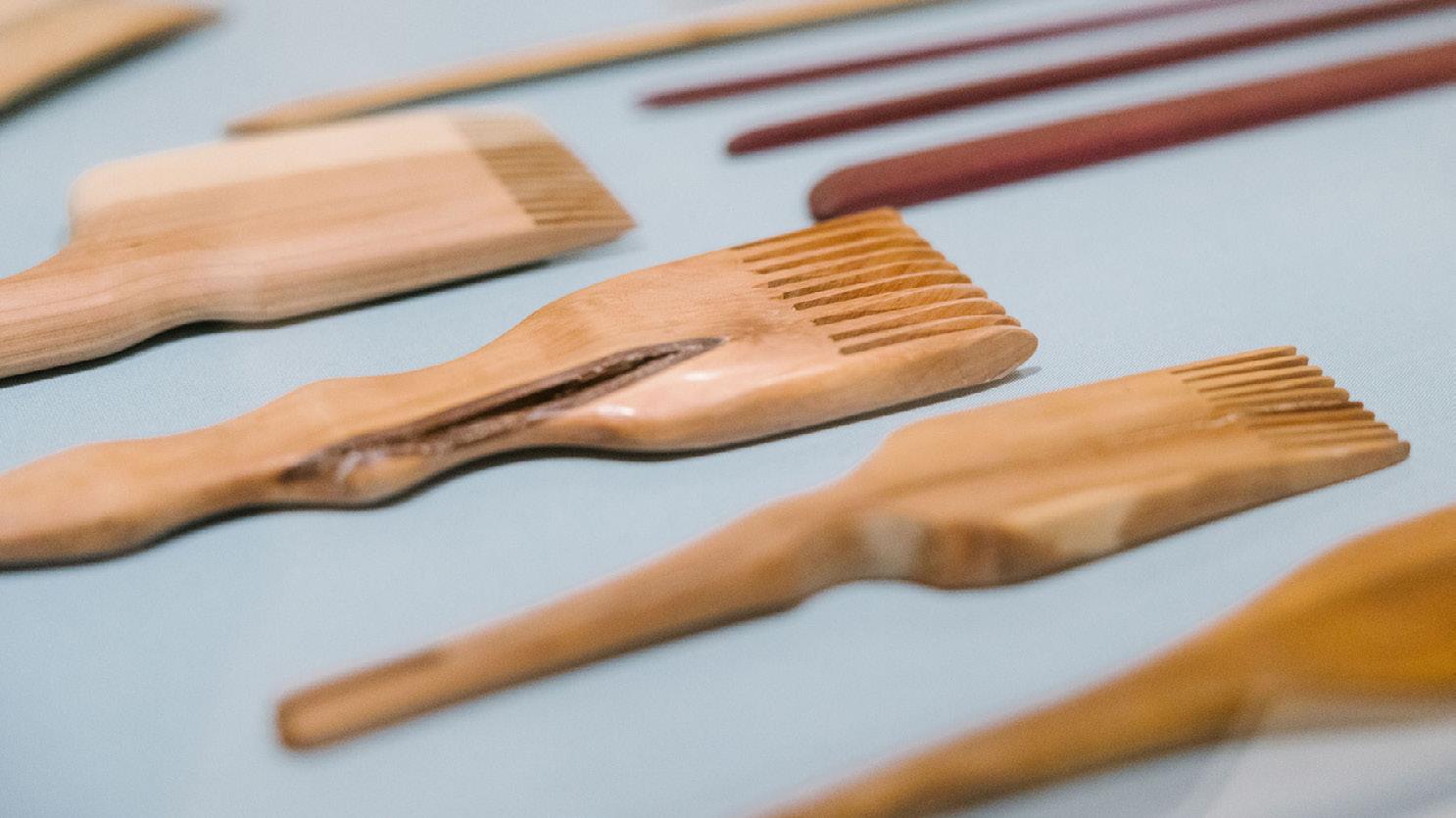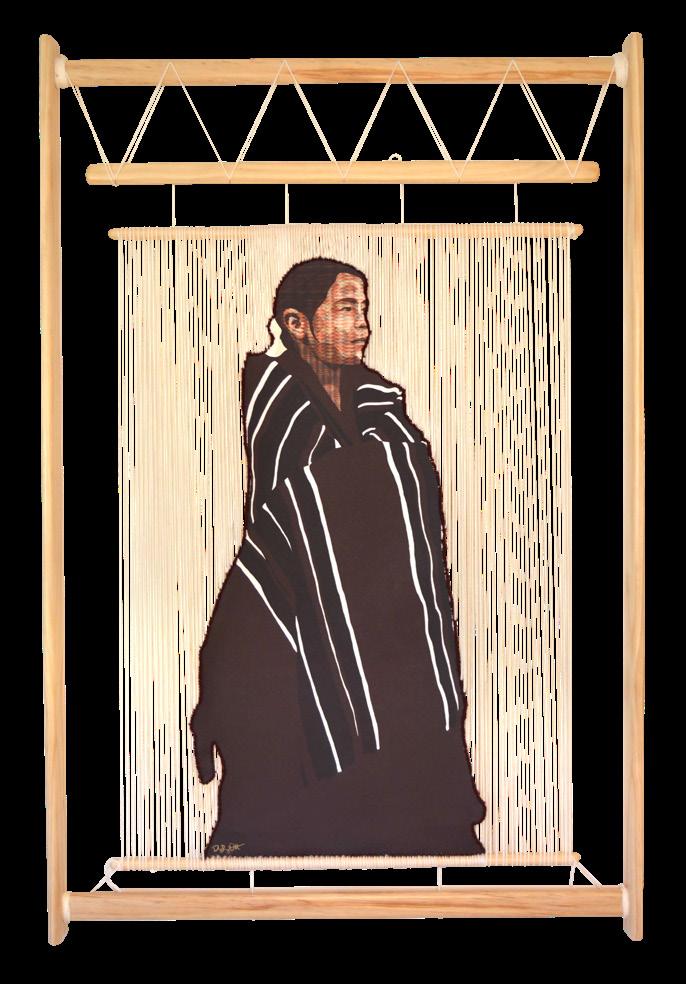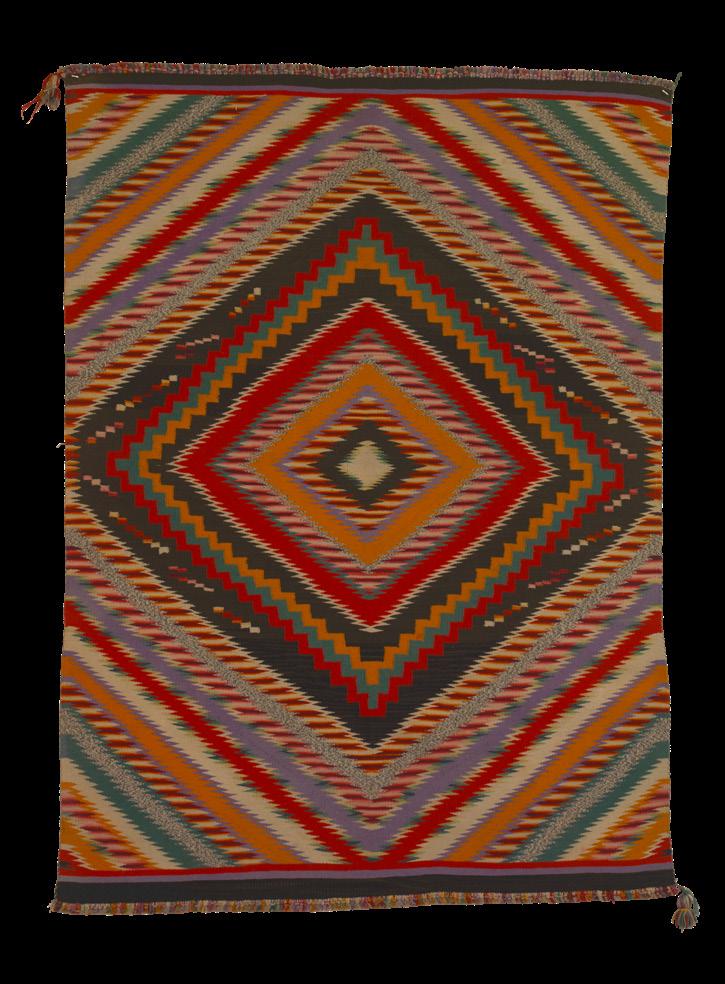
4 minute read
Shaped by the Loom: Weaving Worlds in the American Southwest
February 17–July 9, 2023
Curated by Hadley Welch Jensen (MA ’13, PhD ’18), Bard Graduate Center and American Museum of Natural History Postdoctoral Fellow in Museum Anthropology (2018–21)
Advertisement
In consultation with Lynda Teller Pete and Barbara Teller Ornelas (Diné)
Support for Shaped by the Loom was generously provided by Art Bridges
Additional support provided by the Henry Luce Foundation, the Wyeth Foundation for American Art, and other donors to Bard Graduate Center.
Shaped by the Loom: Weaving Worlds in the American Southwest is an exhibition that grew out of curator Hadley Jensen’s research at the American Museum of Natural History (AMNH) in her role as the Bard Graduate Center / AMNH Postdoctoral Fellow in Museum Anthropology. Over the course of five years, Jensen (MA ’13, PhD ’18) studied a collection of almost three hundred Diné (Navajo) weavings made in the late nineteenth and early twentieth centuries that were acquired by the museum in 1910 and 1911. Very few of the items in the collection had been on view before the opening of Shaped by the Loom.
From that research, and in consultation with Lynda Teller Pete and Barbara Teller Ornelas, fifth generation Diné textile artists, Jensen developed an online exhibition and a multisensory gallery experience that would display these textiles in conversation with the work of contemporary Diné artists, emphasizing the ecological, historical, and cosmological contexts in which they were created.
Jensen collaborated with Bard Graduate Center’s director of Digital Humanities / Digital Exhibitions Jesse Merandy, composer and pianist Connor Chee (Diné), digital artist and printmaker Darby Raymond-Overstreet (Diné), and photographer Rapheal Begay (Diné) to create a space in the exhibition that would immerse visitors in the landscapes of the Navajo Nation, thanks to floor-to-ceiling projections of panoramic imagery featuring sites such as Window Rock, Canyon de Chelly, Monument Valley, and Shiprock Pinnacle. These images were accompanied by Chee’s original composition, commissioned for this project by BGC.
Both the gallery and the online exhibitions were organized around the themes of homeland, creation, and cosmology; ecology; dyeing and coloring; knowledge and process; design elements; and value and exchange. The digital exhibition highlights historical and contemporary objects in each theme, as well as essays, interactive features, artist interviews, and the first online catalogue of the Navajo weaving collection at AMNH. Visitors to the gallery exhibition were invited to listen to audio reflections made by fiber artist and weaver Tyrrell Tapaha (Diné) in response to specific items on view; these recordings are also accessible from the online exhibition.
BGC’s department of Public Humanities + Research (PH+R) developed gallery tours for the public and for special groups including members of the College Art Association and for Arts and Minds, a nonprofit group that provides museum-based experiences for people with dementia and their care partners. In addition, PH+R produced an educators’ guide, a resource guide for visitors, and a series of events to enhance the Shaped by the Loom experience, including a studio visit with Arnold Clifford, Diné ethnobotanist. In fact, many contemporary Diné artists led and participated in these events (see story on p. 90 for more details). As an additional complement to the exhibition, Juliana Fagua Arias and Jessie Mordine Young, members of BGC’s MA class of 2020, produced a podcast series, Fields of the Future: Unraveling the Loom. It features interviews with scholars, artists, and educators working with Indigenous textiles and the textile histories of the southwestern United States and Mexico.
Shaped by the Loom was included on the “T List,” a weekly roundup of recommendations from the New York Times’ design magazine T, and was covered by Forbes, HALI, Selvedge, Shuttle Spindle and Dyepot, Antiques and the Arts Weekly, American Craft Magazine, the Decorative Arts Trust Bulletin, the Navajo Times, Western Art and Architecture, First American Art Magazine, and the podcasts This Week in Art and DRESSED. HALI, an international publication focused on carpets and textiles, called Shaped by the Loom “a sumptuous visual feast” and continued, “Jensen, together with a group of Bard Graduate Center students, has created an accomplished and exciting show supported by an excellent and exhaustive digital exhibition, [whose] essence is the connection between thinking, making and knowing.”
With support from Art Bridges, the exhibition will tour to the Fenimore Art Museum in Cooperstown, New York, and the Textile Museum in Washington, DC, in 2023–24.
January 25, 2023
Welcome to the T List, a newsletter from the editors of T Magazine. Each week, we share things we’re eating, wearing, listening to, or coveting now.
VIEW THIS
Resurfacing Indigenous History Through Navajo Textiles


By Abigail Glasgow T Contributor
When the curator Hadley Jensen discovered a collection of Navajo weavings at New York’s American Museum of Natural History that had not been seen since 1910, she called on the fifth-generation Navajo, or Diné (as many Navajo people refer to themselves), weavers
Lynda Teller Pete and Barbara Teller Ornelas. Jensen wanted to create an exhibition around these textiles, and she looked to the sisters for programming guidance, artwork interpretation and educational input throughout the process. These textiles, Pete says, reflect “a time suppressed by scholastic interventions,” when Indigenous people were enslaved in the United States, their land overtaken and weaving styles replaced over time by colonialist patterns. Pete experienced cultural erasure firsthand when, in 1964, she was taken from her family home at age six to attend a boarding school in New Mexico as part of a federal program in which Indigenous students were forced to renounce their culture and often were subjected to violence. Pete and Ornelas remain committed as educators to “connecting lost linkages” for Navajo youth while raising awareness around Indigenous history—and that’s exactly what they’re doing in partnership with Jensen for Shaped by the Loom, an exhibit that will open Feb. 17 at the Bard Graduate Center in New York City. Featuring contemporary works in conversation with weavings from 1850 to 1910, Shaped by the Loom will emphasize the experience and ingenuity of Navajo weavers then and now. Navajo tapestry weavings will be accompanied by a soundscape by Diné composer and pianist Connor Chee, while wall-size photographs of the Navajo Nation by Raphael Begay will lead visitors to a second-floor exhibition featuring preserved weaving materials like juniper dye, sumac roots, and unwashed wool. The exhibit will also feature a K-through-12 educators’ guide. “We need people to be curious about the Navajo people,” Pete says. “We’re still here, by the grace of our ancestors, and we want the American public to learn our history too.”










